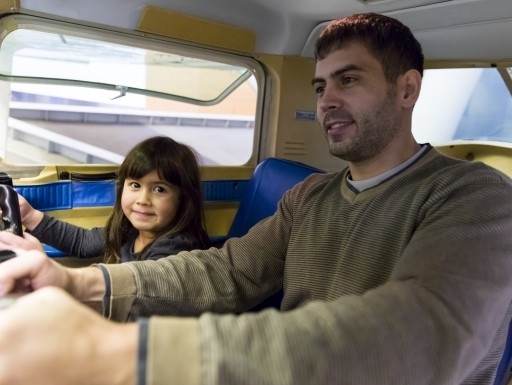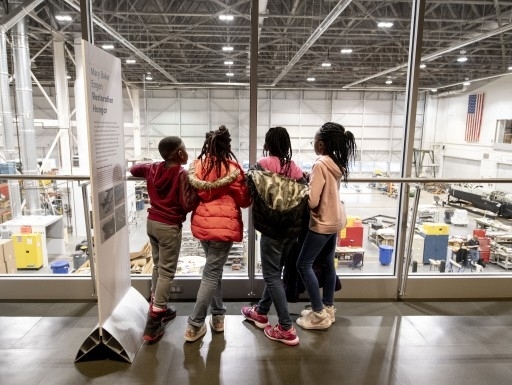A flash of orange flame cut through the pitch-black Florida sky over Cape Canaveral. At 12:30 a.m. on Friday, April 7, a SpaceX Falcon 9 shot into space, carrying an instrument that will transform the way we understand and monitor air pollution across North America—Tropospheric Emissions: Monitoring of Pollution, or TEMPO. Hundreds of scientists, engineers and administrators from the Smithsonian Astrophysical Observatory (SAO)—part of the Center for Astrophysics I Harvard & Smithsonian—NASA, Ball Aerospace and elsewhere watched in transfixed silence from the nearby Banana Creek launch viewing site, their faces briefly illuminated by the light from liftoff. A decade of their research was hurtling into orbit. But the real work is about to begin.

New Science for Cleaner Air
“Our TEMPO slogan is ‘it’s about time,’ which hints at TEMPO’s ability to provide hourly air pollution data,” said Xiong Liu, atmospheric physicist at SAO and deputy principal investigator for TEMPO. “The atmospheric science community saw the need for these measurements 15 years ago or more.”
But scientists didn’t have the right tools. For decades, they measured key chemical pollutants in Earth’s atmosphere with low-earth-orbit satellites that swept the sky, checking ozone, aerosols, sulfur dioxide and nitrogen dioxide emissions at specific locations a handful of times a day. Their understanding of pollutants in the air we breathe was incomplete.
Kelly Chance, senior physicist at SAO, principal investigator for TEMPO and a leader in atmospheric science, envisioned a new approach: a satellite locked in geostationary orbit, taking hourly measurements over North America. TEMPO was born.
TEMPO is the first instrument that provides full coverage of daily activities on the continent, measuring emissions from and chemical transformations that follow morning traffic and seasonal crop harvests. It can focus on specific sites for longer periods, pinpointing emissions from huge events such as forest fires.
Chance, Liu and a team of engineers and researchers—including Raid Suleiman, John Davis and John Houck at the Smithsonian and partners at NASA’s Langley Research Center—developed the idea. A cohort of scientists and engineers from SAO, NASA, Ball Aerospace, Maxar Technologies and Intelsat brought TEMPO to life: one of the most ambitious collaborative efforts among public, private and commercial institutions in the history of atmospheric research.
Data for All
TEMPO’s measurements of the Earth’s atmosphere will be put to work in many ways. Caroline Nowlan, TEMPO team member and atmospheric physicist at SAO, will help verify and release the data to the NASA Atmospheric Science Data Center, where it will be accessible to a vast community of scientists—and the public.
“Some people will forecast air quality in their communities,” said Nowlan. “Epidemiologists will look at acute exposure to certain chemicals for ties to disease and other health issues. Farmers want to understand the effects of ozone pollution on crop activity.” More than 300 individuals and organizations have requested access to the first tranche of data, expected in the fall.
“TEMPO will provide critically important data that individuals, students, educators, community leaders and policymakers can use to answer: What am I breathing?” said Lisa Kewley, director of the Center for Astrophysics | Harvard & Smithsonian. “What pollutants are impacting me and my community? Are there simple things we can do to breathe cleaner air?”
The TEMPO team is also building tools, such as curriculum guides and an interactive app, so that young people can parse TEMPO data accessible in real time by region. Erika Wright, education specialist at SAO, hopes the data will inspire young people to examine the causes and effects of pollutants in their communities. “It’s not just about having access to the data,” said Wright. “It’s having the supports to unpack and investigate it that can really make a difference.”
Learn more: tempo.si.edu
Published Summer 2023 in IMPACT Vol. 9. No 2
Click here to read more about the Smithsonian's work to build, maintain and protect resilient ecosystems.
Your gift fuels innovation, inspiration and exploration for lifelong learners everywhere. Make a gift today.



